The Psychology Behind Throwing Clay
Have you ever felt the urge to get your hands dirty and mold something from scratch? The act of throwing clay is not just about creating pottery; it’s a deep dive into the human psyche. Engaging with clay taps into our mental and emotional states, revealing layers of creativity, healing, and social connection that many might overlook. It’s fascinating how this ancient art form can serve as a powerful tool for self-discovery and emotional expression. Let’s explore the intricate psychology behind this beautiful craft and uncover the therapeutic benefits, the joy of creativity, and the profound connections it fosters.
Engaging with clay can reduce stress and anxiety, providing a calming effect that enhances mental well-being. When you sit at a pottery wheel, the world around you tends to fade into the background. The tactile sensation of clay between your fingers can be incredibly grounding. In fact, studies have shown that working with clay can lower cortisol levels, which is the hormone associated with stress. Imagine the feeling of molding something from a lump of clay; it’s not just about the end product, but the process itself is a form of meditation. This section delves into the psychological healing properties of working with clay, highlighting how it can serve as a form of therapy for many individuals.
Clay throwing serves as a medium for personal expression. It’s a canvas where you can pour your thoughts and emotions, often communicating what words cannot. When you shape clay, you’re not just creating an object; you’re telling a story, expressing feelings, and exploring your inner world. This part discusses how creating pottery allows individuals to explore their creativity and communicate emotions that may be difficult to articulate. The act of creating is liberating, and it can lead to profound self-discovery. Whether you’re crafting a simple bowl or an intricate vase, each piece reflects a part of you.
The act of throwing clay encourages mindfulness, helping individuals focus on the present moment. As you concentrate on the spinning wheel and the clay in your hands, it becomes a form of meditation. This subsection highlights how this practice fosters a sense of awareness and grounding. In our fast-paced world, finding moments of stillness can be challenging. However, when you’re engaged in clay work, you’re forced to slow down and be present. This mindfulness can lead to improved mental clarity and emotional stability, making it an invaluable practice for anyone seeking peace in their busy lives.
Practicing mindfulness through clay work can enhance cognitive functions such as concentration and problem-solving. The focus required to shape clay can sharpen your mental acuity, allowing you to tackle challenges both on and off the wheel. This section elaborates on the mental clarity gained from such activities. When you immerse yourself in the tactile experience of clay, you’re not just working with your hands; you’re also engaging your mind. This dual engagement can lead to improved cognitive flexibility, making it easier to adapt to new situations in life.
Creating art can aid in emotional regulation, allowing individuals to process feelings effectively. This part explores how clay throwing can serve as an emotional outlet. The act of molding clay can be cathartic, providing a safe space to express feelings of joy, sadness, or frustration. Many artists find that their best work comes from moments of emotional turmoil, and clay work is no different. It allows for the exploration of complex emotions, helping individuals to understand and regulate their feelings more effectively.
Mistakes are inherent in the pottery-making process. This subsection examines how embracing failure in clay work can foster resilience and a growth mindset. Every potter has experienced the frustration of a cracked piece or a shape that just doesn’t come out right. However, rather than seeing these failures as setbacks, they can be viewed as valuable lessons. Each mistake is an opportunity to learn and grow, teaching us to be patient and persistent. This mindset shift not only enhances our pottery skills but also translates to other areas of life.
Participating in pottery classes promotes social interaction and community building. This section discusses the importance of these connections for emotional support and collaboration. When you’re surrounded by fellow clay enthusiasts, you’re not just sharing a space; you’re sharing experiences, challenges, and triumphs. The camaraderie that develops in these settings can lead to lasting friendships and a strong support network, making the journey of learning pottery even more enriching.
Shared experiences in pottery classes can strengthen bonds among participants. This part explores how working together fosters camaraderie and a sense of belonging. Whether you’re collaborating on a piece or simply sharing tips, the connections made in these classes can be profound. There’s something special about creating alongside others, as it enhances the sense of community and belonging. You’re not just learning a skill; you’re building relationships that can last a lifetime.
The role of a skilled instructor can greatly influence the learning experience. This section highlights how effective teaching methods enhance both skill development and psychological growth in students. A good instructor doesn’t just teach techniques; they inspire creativity and confidence. They create an environment where students feel safe to experiment and express themselves, which is crucial for both artistic and personal growth. With the right guidance, students can unlock their potential and discover the joy of creating.
- What are the mental health benefits of working with clay? Working with clay can reduce stress, enhance mindfulness, and promote emotional expression.
- Can anyone learn pottery? Absolutely! Pottery is for everyone, regardless of skill level. The key is to be open to learning and experimenting.
- How does pottery help with emotional regulation? The creative process of making pottery allows individuals to express and process emotions, leading to better emotional management.
- What if I make mistakes while throwing clay? Mistakes are part of the learning process! Embracing them can lead to growth and improved skills.
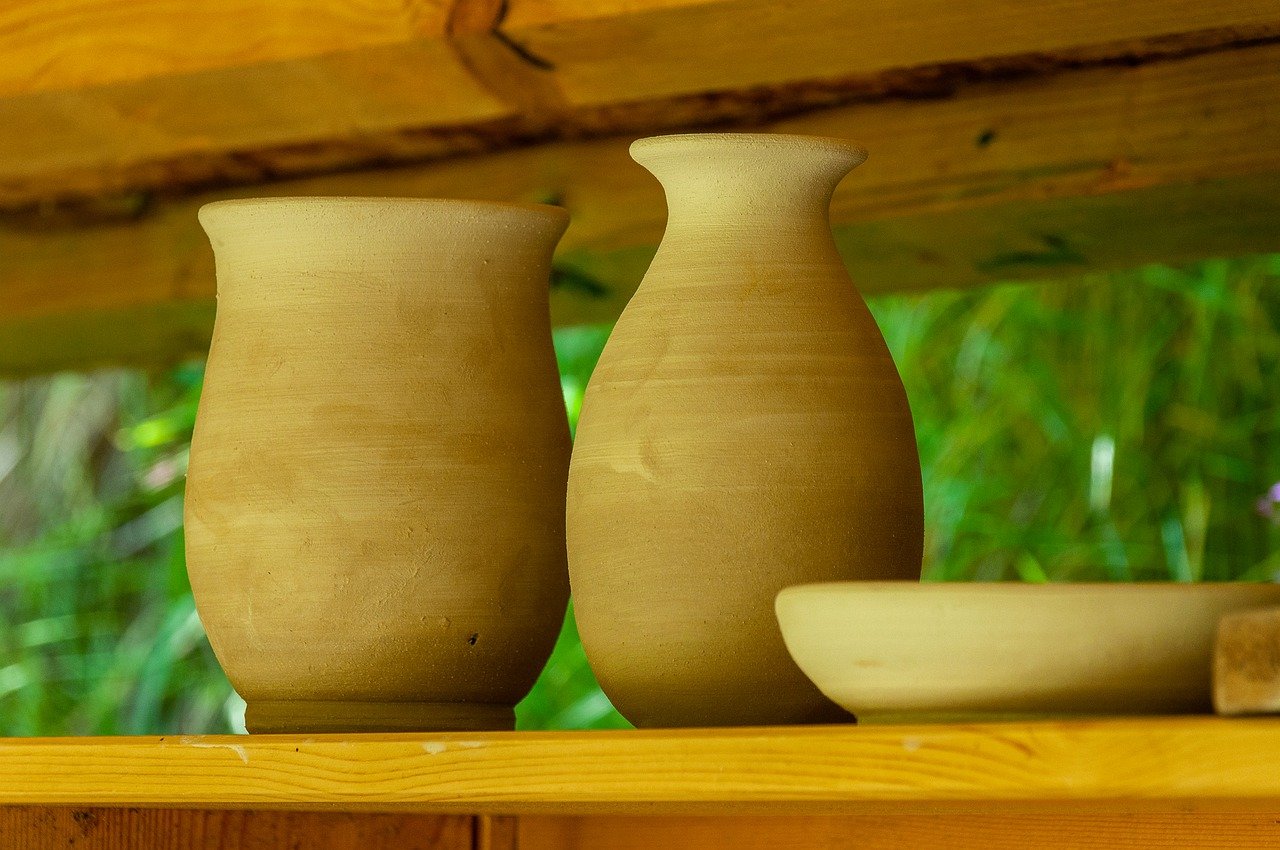
The Therapeutic Benefits of Clay Work
Engaging with clay is not just about creating beautiful pottery; it’s a profound journey into the depths of our mental and emotional well-being. When you sit at the pottery wheel, hands immersed in the cool, pliable earth, you are not merely crafting; you are embarking on a therapeutic adventure that can significantly reduce stress and anxiety. The tactile experience of molding clay has a unique ability to ground us, pulling our thoughts away from the chaos of daily life and into the present moment. Isn’t it fascinating how something so simple can have such a powerful impact?
Research indicates that the act of working with clay can trigger the release of endorphins, the body’s natural feel-good hormones. This biochemical response can lead to a sense of calm and happiness, making clay work an effective form of therapy for many individuals. It’s like finding a cozy nook in a bustling café where you can sip your favorite coffee while the world rushes by outside. With every spin of the wheel, worries begin to dissipate, and a sense of tranquility takes their place.
Moreover, clay work can serve as a form of mindfulness practice. When you focus on the texture of the clay, the rhythm of the wheel, and the movement of your hands, you create an oasis of calm. This mindful engagement helps to silence the incessant chatter of the mind, allowing for a deeper connection with oneself. Just imagine how liberating it feels to let go of distractions and immerse yourself in an activity that fosters self-awareness and inner peace.
In addition to reducing stress, working with clay can also facilitate emotional healing. Many people find that expressing their feelings through art can be incredibly cathartic. Clay provides a medium where emotions can be externalized, whether it’s joy, frustration, or sadness. It’s almost like having a conversation with a friend who listens without judgment. This process of creation can lead to profound insights and personal revelations, making it a valuable tool for those navigating emotional challenges.
To illustrate these therapeutic benefits, let’s take a look at some key aspects:
| Therapeutic Benefit | Description |
|---|---|
| Stress Reduction | Engaging with clay calms the mind and alleviates anxiety. |
| Mindfulness | Encourages presence and focus, fostering a sense of calm. |
| Emotional Expression | Allows individuals to articulate feelings through creative outlets. |
| Personal Insight | Facilitates self-discovery and emotional healing. |
In conclusion, the therapeutic benefits of clay work extend far beyond the physical act of shaping and molding. It’s a holistic experience that nurtures the mind, body, and spirit. Whether you’re a seasoned potter or a curious beginner, engaging with clay can unlock a treasure trove of emotional and psychological benefits. So why not give it a try? You might just discover a new path to healing and self-discovery.
- What are the mental health benefits of working with clay? Working with clay can reduce stress, enhance mindfulness, and facilitate emotional expression.
- Do I need prior experience to benefit from clay work? No prior experience is necessary; the therapeutic effects can be enjoyed by anyone, regardless of skill level.
- How does clay work promote mindfulness? The tactile nature of clay encourages focus on the present moment, helping to quiet the mind.
- Can clay work help with emotional healing? Yes, creating with clay can serve as a powerful outlet for processing emotions and gaining personal insights.
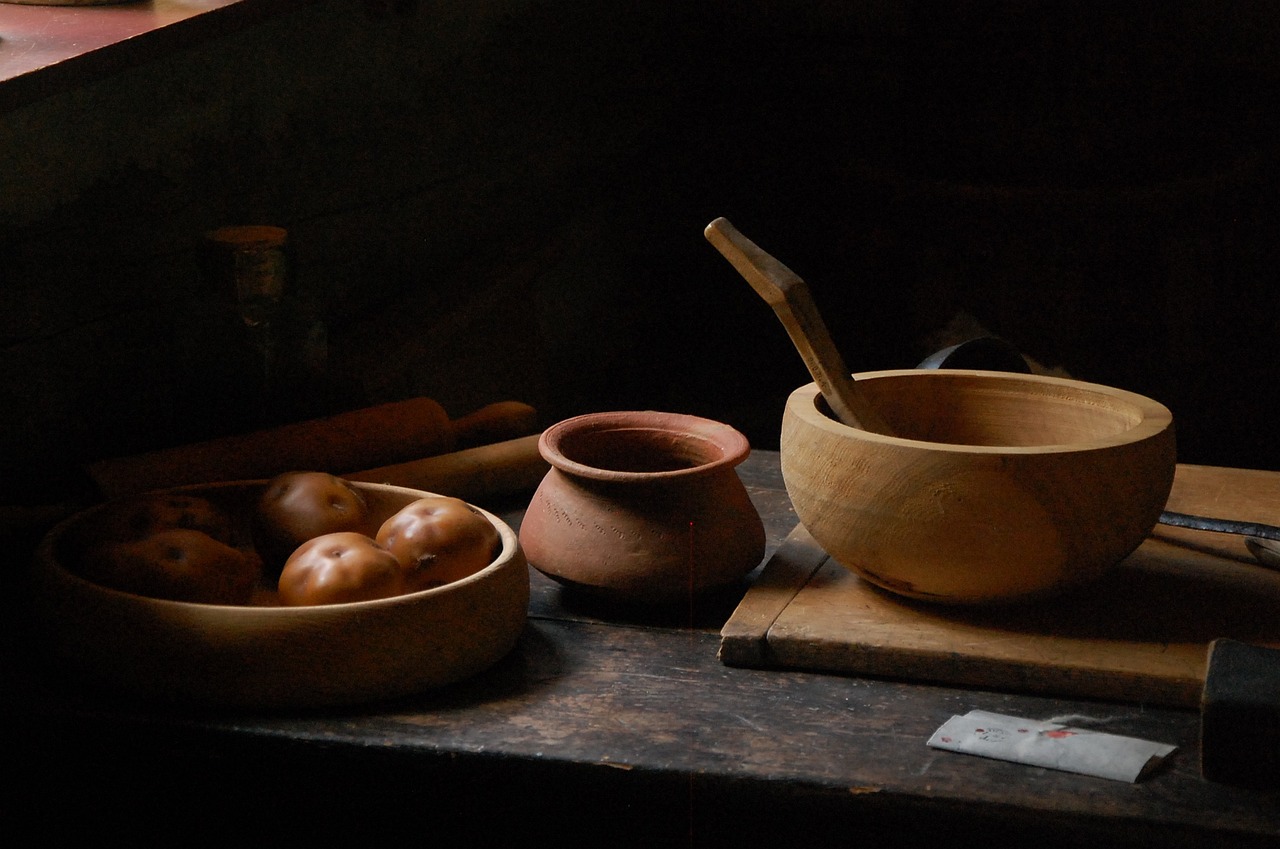
When you think about clay throwing, what comes to mind? Perhaps it's the image of a potter spinning a wheel, their hands deftly shaping a lump of clay into something beautiful. But beyond the visual appeal lies a deeper connection: the act of creating with clay serves as a powerful medium for personal expression. For many, it becomes a canvas where emotions can flow freely, allowing individuals to communicate feelings that might otherwise remain trapped inside.
Imagine standing at a pottery wheel, your fingers sinking into the cool, damp clay. As you begin to mold and shape, it's as if you are sculpting not just the clay, but also your inner thoughts and feelings. This tactile experience can be incredibly liberating. In a world where words often fail us, clay becomes a voice—a way to articulate what we feel without uttering a single word. The colors, textures, and forms you choose reflect your unique personality and emotional state, creating a tangible representation of your inner self.
Moreover, the process of creating pottery allows for a level of exploration that is both exciting and enlightening. Each piece you craft tells a story, whether it's a simple bowl or an intricate vase. This journey of creation can be likened to a dance—one that invites spontaneity and experimentation. You might find yourself trying new techniques, mixing colors, or even incorporating unexpected materials. Each attempt brings you closer to understanding not just the art of pottery, but also yourself.
In many pottery studios, the atmosphere is charged with creativity, where ideas bounce off the walls and inspiration flows freely. It's not just about making something pretty; it's about the process and the journey. As you work alongside fellow potters, you may find that their energy fuels your own creative spirit. The act of sharing ideas and techniques fosters a sense of community, allowing everyone to grow and evolve together. The beauty of clay work lies in its ability to connect people—each person bringing their unique perspective, enhancing the collective experience.
Furthermore, engaging in clay throwing can lead to surprising revelations. You might discover new facets of your personality or unearth emotions that have been buried for years. The very act of creating can be a form of therapy, helping you process feelings and thoughts that are difficult to articulate. As you immerse yourself in the rhythm of shaping clay, you may find clarity and insight emerging, transforming the act of pottery into a profound journey of self-discovery.
In essence, clay throwing is more than just a hobby; it is a powerful tool for creativity and self-expression. It invites you to explore, experiment, and express your innermost thoughts and feelings. So, the next time you sit at that pottery wheel, remember that you’re not just shaping clay—you’re shaping your own narrative, one piece at a time.
- What are the benefits of clay throwing for creativity? Clay throwing allows individuals to express themselves artistically, explore new ideas, and communicate emotions that might be difficult to convey verbally.
- Can pottery help with emotional healing? Yes! The tactile nature of working with clay can provide a therapeutic outlet for emotions, helping individuals process feelings and achieve mental clarity.
- Do I need prior experience to start throwing clay? Absolutely not! Pottery classes are designed for all skill levels, and beginners are always welcome to explore their creativity.
- How does clay work foster community? Participating in pottery classes encourages collaboration and social interaction, allowing individuals to build relationships through shared creative experiences.
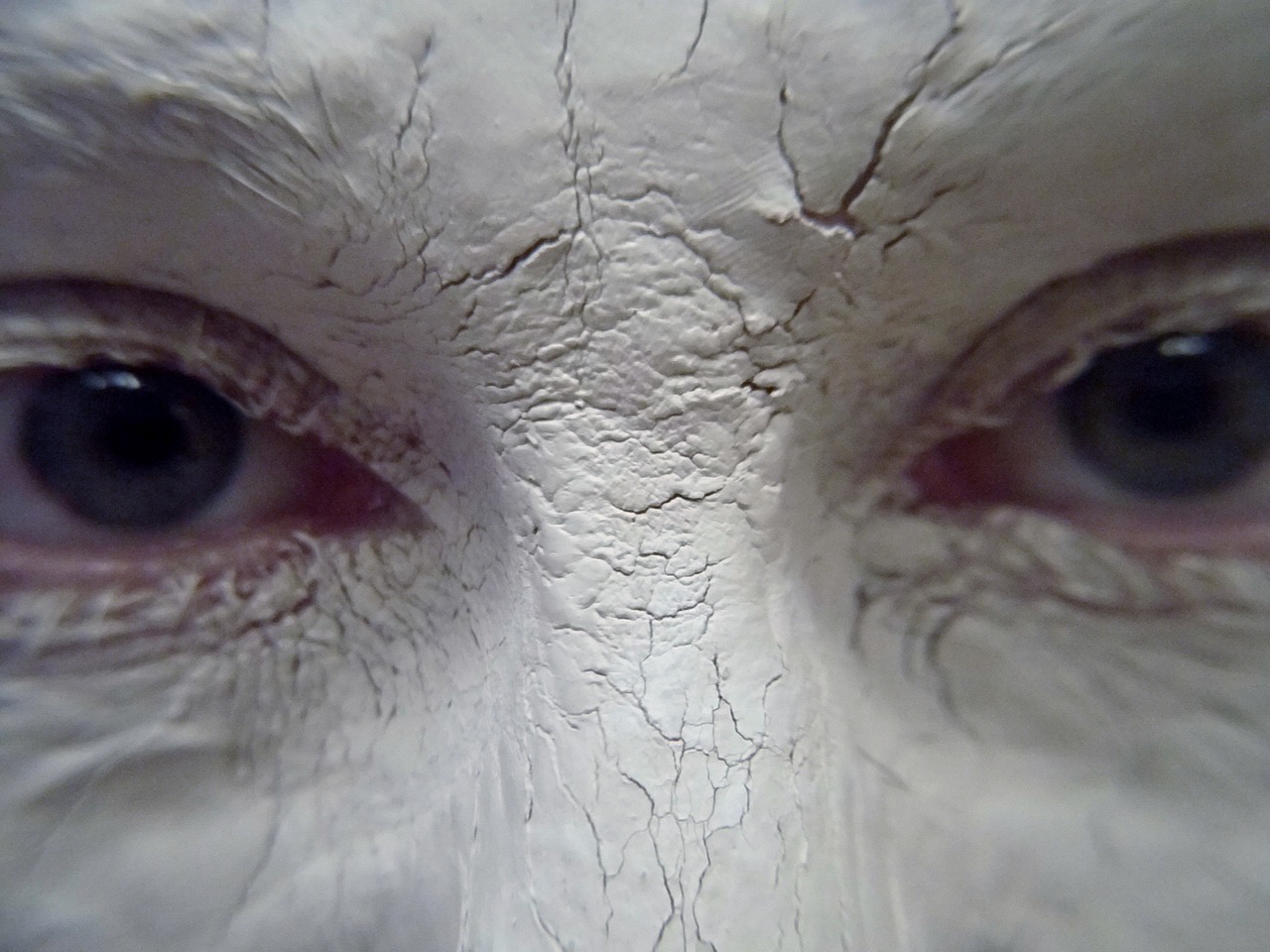
When you sit down at the potter's wheel, there’s something magical that happens. The world around you fades away, and you become enveloped in the moment. This is mindfulness—a state where your thoughts, feelings, and sensations are completely in sync with the task at hand. Clay throwing is not just about shaping a lump of earth; it’s about immersing yourself in the tactile experience, feeling the coolness of the clay, the rhythm of your hands, and the gentle spin of the wheel. This process encourages you to focus entirely on the here and now, which can be incredibly grounding.
In our fast-paced lives, we often find ourselves juggling multiple tasks, worrying about the future, or regretting the past. However, when you engage in clay work, you’re invited to step into a sanctuary of presence. Think of it as a mini-vacation for your mind! The act of molding and shaping clay requires your full attention, pulling you away from the chaos of daily life. As you concentrate on your creation, you may find that your worries dissipate, replaced by a sense of calm and clarity.
Moreover, the repetitive motions involved in throwing clay can serve as a form of meditation. Just like a mantra, the act of centering the clay, pulling it up, and shaping it can create a rhythm that soothes your mind. This is where the beauty of mindfulness shines—by focusing on the physical sensations and the process, you cultivate a deeper awareness of yourself and your surroundings. It’s a beautiful cycle: the more you practice being present, the more skilled you become at throwing clay, and the more you enjoy the therapeutic benefits of this ancient art form.
Interestingly, research has shown that engaging in mindful activities like clay throwing can lead to significant cognitive benefits. For instance, participants often report improved concentration and enhanced problem-solving skills. The reason? When you’re fully present, your brain is not distracted by external stimuli or internal chatter. Instead, it's able to focus on the task, leading to greater clarity and creativity. In fact, many potters have noted that some of their best ideas come while they’re in that meditative state of throwing clay.
So, next time you find yourself at the wheel, remember that you’re not just creating pottery; you’re also cultivating a deeper connection to the present moment. It’s a dance between your mind and hands, a beautiful interplay that can lead to both artistic expression and personal growth. Embrace this experience, and you may discover that the simple act of throwing clay can transform your mental landscape, bringing you peace and clarity in ways you never thought possible.
- What is mindfulness in pottery? Mindfulness in pottery involves being fully present and engaged in the process of creating, allowing you to focus on the sensations and movements involved in throwing clay.
- How can clay throwing reduce stress? The repetitive motions and concentration required in clay work can help distract from stressors, promoting relaxation and mental clarity.
- Can anyone learn to throw clay? Absolutely! Clay throwing is a skill that can be learned by anyone, regardless of prior experience, and it can be incredibly rewarding.

Engaging in the art of clay throwing is not merely a creative outlet; it also serves as a powerful tool for enhancing cognitive functions through the practice of mindfulness. When you sit at the potter's wheel, your focus shifts entirely to the task at hand. This immersive experience encourages you to be present in the moment, which is a cornerstone of mindfulness. By concentrating on the texture of the clay, the rhythm of the wheel, and the movements of your hands, you create a mental space that fosters clarity and awareness.
Mindfulness in clay work can lead to significant cognitive benefits, such as improved concentration and enhanced problem-solving skills. As you mold and shape the clay, you learn to navigate challenges and make adjustments on the fly. This process is akin to a mental workout, where each session on the wheel sharpens your ability to think critically and adaptively.
Moreover, the repetitive motions involved in throwing clay can have a meditative effect. This rhythm can help quiet the mind, allowing for a deeper connection to your thoughts and feelings. As a result, many individuals find that their creative thinking flourishes during these moments of focused attention. To illustrate this, consider the following table:
| Cognitive Benefits | Description |
|---|---|
| Improved Concentration | Mindfulness helps you focus on the task, reducing distractions and enhancing attention span. |
| Enhanced Problem-Solving | Engaging with clay encourages you to think critically and find solutions to unexpected challenges. |
| Increased Creativity | The meditative state achieved during clay work can lead to bursts of creative ideas and insights. |
Additionally, the practice of mindfulness through clay work can have long-lasting effects beyond the studio. Many practitioners report that the skills they develop while throwing clay—such as patience, focus, and adaptability—translate into their daily lives. Whether it's at work, in personal relationships, or during problem-solving situations, the cognitive enhancements gained from mindful clay throwing can empower individuals to approach challenges with a clearer mind and a more open heart.
In summary, the cognitive benefits of mindfulness achieved through clay work are profound. By immersing yourself in this ancient art form, you not only create beautiful pottery but also cultivate a sharper, more resilient mind. So, the next time you sit down to throw, remember that you are not just shaping clay; you are also shaping your mental landscape.
- What is mindfulness in the context of clay throwing? Mindfulness refers to being fully present and engaged in the moment, which can be achieved through the focused practice of throwing clay.
- How does clay work enhance cognitive functions? The repetitive and immersive nature of clay work helps improve concentration, problem-solving skills, and creative thinking.
- Can anyone practice clay throwing for mindfulness? Yes! Clay throwing is accessible to people of all skill levels and can be beneficial for anyone seeking to enhance their mindfulness practice.
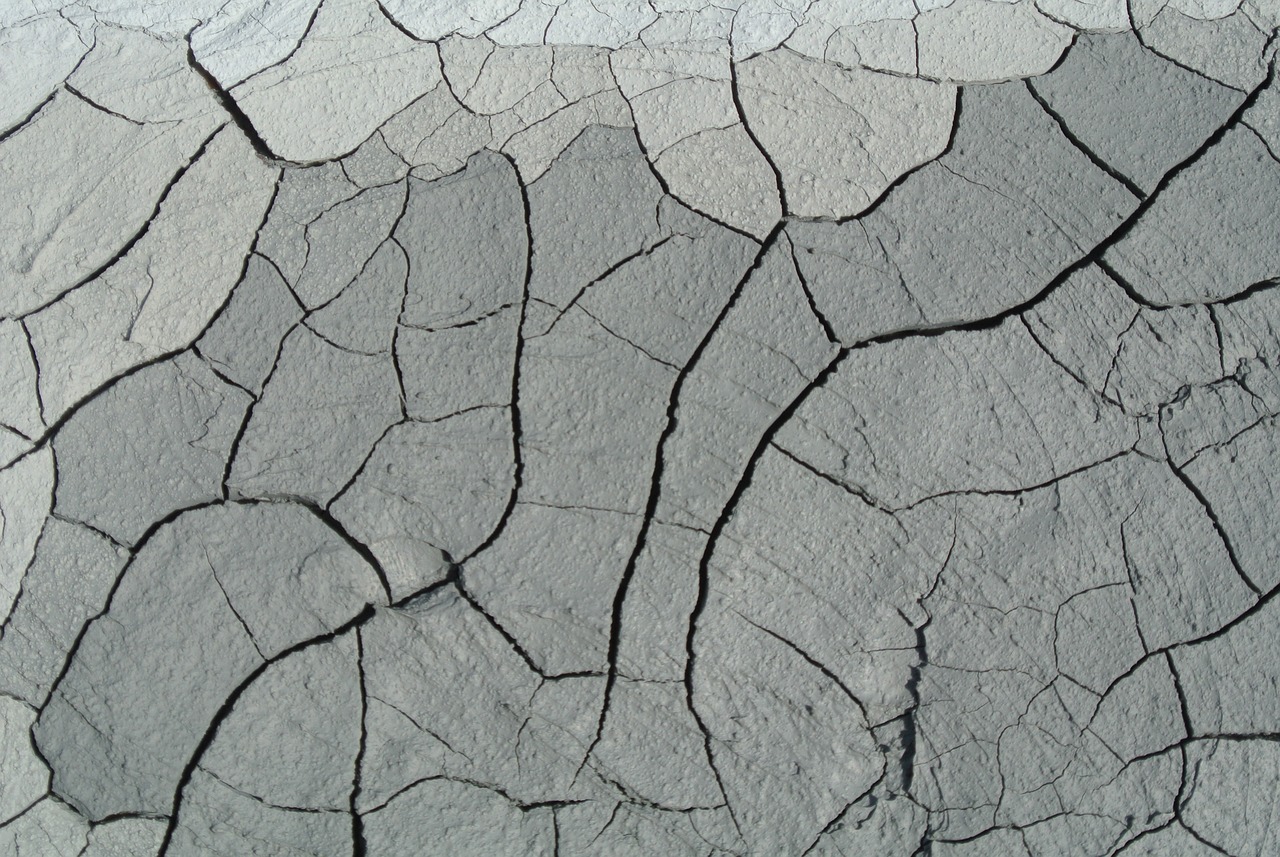
Art has an incredible power to facilitate emotional regulation, and working with clay is no exception. When you sit down at a pottery wheel, your hands immersed in the cool, malleable earth, you enter a world where your feelings can take shape. The act of molding clay allows individuals to express emotions that might be difficult to articulate verbally. Imagine your frustrations, joys, and sorrows transforming into tangible forms as you shape and refine your creation. This process can be incredibly cathartic.
One of the most profound aspects of clay work is its ability to serve as a safe outlet for emotional expression. Instead of bottling up feelings, you can channel them into your art. For instance, if you're feeling anxious, the repetitive motion of throwing clay can be soothing, almost like a meditative practice. As you focus on the clay, you might find that your worries begin to dissipate, replaced by a sense of calm and clarity. This is a beautiful example of how art can act as a therapeutic tool.
Furthermore, engaging in clay work can help individuals process complex emotions. When creating pottery, you might find yourself reflecting on personal experiences or relationships. This reflection can lead to insights and a deeper understanding of your emotions. The tactile nature of clay encourages a physical connection to your feelings, making it easier to confront and work through them. In a sense, the clay becomes a mirror, reflecting your inner world and allowing you to explore it safely.
To illustrate the emotional benefits of clay work, consider the following:
| Emotion | Clay Work Benefits |
|---|---|
| Anxiety | Soothing repetitive motions can calm the mind. |
| Frustration | Molding clay provides a physical outlet for pent-up energy. |
| Joy | Creating something beautiful can boost self-esteem and happiness. |
| Sadness | Artistic expression can facilitate healing and reflection. |
In conclusion, the act of throwing clay is not just about creating pottery; it’s a profound journey into the self. By embracing this ancient art form, individuals can navigate their emotional landscapes more effectively. Whether you’re seeking to calm your mind, express your feelings, or simply find a moment of peace, clay work offers a unique path to emotional regulation. So, the next time you feel overwhelmed, consider reaching for that lump of clay and let your hands do the talking.
- How does working with clay reduce stress? Working with clay engages both the mind and body, providing a meditative experience that can reduce stress levels.
- Can anyone learn to throw clay? Absolutely! Clay throwing is a skill that can be learned by anyone, regardless of previous experience.
- What are the mental health benefits of pottery? Pottery can improve mindfulness, enhance emotional regulation, and promote creative expression, all of which contribute to better mental health.
- How often should I practice pottery for emotional benefits? Regular practice, even just once a week, can significantly enhance the emotional benefits of clay work.
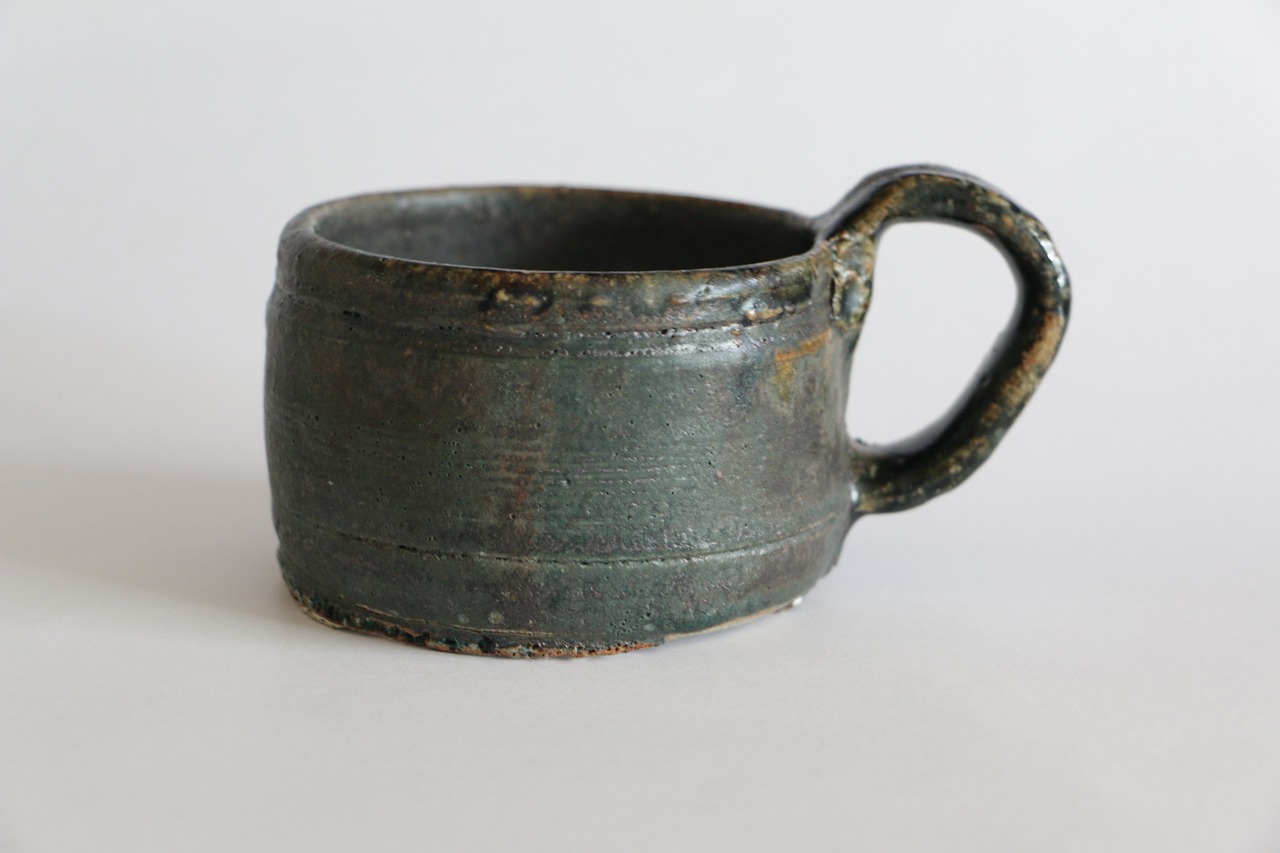
When it comes to the art of throwing clay, one of the most profound lessons we can learn is that failure is not the opposite of success; rather, it is an essential part of the journey. Each time we sit at the potter's wheel, we are not just shaping clay; we are also shaping our own understanding of resilience and growth. The beauty of pottery lies in its imperfections—those wobbly edges and uneven surfaces tell a story of exploration and experimentation.
Imagine this: you’re excited to create a beautiful vase, but as you start to form it, it collapses into a messy heap. At first, this may feel frustrating, but it’s precisely in these moments of failure that we discover the most about ourselves. Instead of viewing these mishaps as setbacks, we can choose to see them as opportunities for learning. Each failed attempt teaches us something new about technique, balance, and even our own patience. It’s like learning to ride a bike—every fall is a step closer to mastering the ride.
In the world of pottery, embracing failure encourages a growth mindset. This concept, popularized by psychologist Carol Dweck, emphasizes the belief that abilities can be developed through dedication and hard work. When we approach our clay work with this mindset, we begin to understand that every mistake is a valuable lesson. For instance, if a piece cracks during the drying process, instead of feeling defeated, we can analyze what went wrong—was it the thickness of the clay? Did I rush the drying time? By asking these questions, we can refine our skills and improve our craft.
Furthermore, the act of creating pottery is inherently experimental. Each piece we create is a unique expression of our creativity, and the journey of learning involves a fair share of trial and error. It’s important to remember that even the most skilled potters have had their fair share of failures. In fact, they often credit these experiences for their growth. A seasoned potter might say, “I learned more from my mistakes than from my successes.” This perspective not only fosters resilience but also cultivates a deeper appreciation for the art form.
Moreover, the community aspect of pottery classes can amplify this learning experience. When students share their struggles and failures with one another, it creates a supportive environment where everyone can learn together. This camaraderie is vital in helping individuals feel less isolated in their creative journeys. By discussing their challenges, potters can exchange tips and strategies, transforming failures into collective learning moments. In this way, the role of failure transcends the individual—it becomes a shared experience that strengthens the bonds within the community.
In conclusion, the role of failure in clay throwing is not just about the physical act of creating pottery; it’s a profound journey of self-discovery and learning. By embracing our failures, we cultivate resilience, enhance our skills, and foster connections with others. So the next time your clay creation doesn’t turn out as planned, remember: it’s not the end of the road, but rather a stepping stone on the path to mastery.
- What should I do if my clay piece collapses? Don't be discouraged! Analyze what went wrong, learn from it, and try again. Each failure is a lesson.
- How can I improve my pottery skills? Practice regularly, seek feedback from peers, and embrace a growth mindset. Remember, every expert was once a beginner.
- Is pottery a good way to relieve stress? Absolutely! The tactile nature of clay and the focus required can be incredibly therapeutic.

Participating in pottery classes is more than just learning to shape clay; it's about forming lasting social connections that can enrich our lives in numerous ways. When individuals come together in a creative setting, they share not only techniques and tips but also their personal stories, struggles, and triumphs. This communal aspect of pottery creates a unique environment where friendships can blossom, and support systems can develop. Have you ever noticed how working alongside others can make even the most challenging tasks feel lighter? In the context of pottery, this camaraderie can turn a simple class into a vibrant community.
One of the most beautiful things about pottery classes is the diversity of participants. You might find a retired teacher sharing her wisdom, a young artist exploring new mediums, or even a corporate professional seeking an escape from their hectic life. This rich tapestry of backgrounds and experiences fosters meaningful interactions that can lead to deep connections. You might be surprised at how quickly a shared love for clay can bring people together, creating bonds that extend beyond the classroom.
Moreover, working in a group setting allows for collaborative learning. Imagine a scenario where someone is struggling with a particular technique. Instead of feeling isolated, they can turn to their classmates for help, creating a supportive environment that encourages teamwork and collaboration. This dynamic not only enhances individual skills but also reinforces the idea that we are all in this together, learning and growing side by side.
The impact of these social connections cannot be overstated. Studies have shown that strong social ties contribute to improved mental health and overall well-being. In pottery classes, the act of creating together can be therapeutic, as participants share laughter, frustrations, and triumphs. It's not just about the finished piece; it's about the journey we take together. The clay becomes a medium not only for art but also for building relationships and fostering a sense of community.
Furthermore, pottery classes often provide a safe space for individuals to express themselves. In this environment, participants can explore their creativity without fear of judgment. This freedom encourages open communication and vulnerability, which are essential for forming deep connections. When people feel safe to share their thoughts and feelings, they are more likely to build trusting relationships with their peers.
As we explore the social dynamics within pottery classes, it's essential to highlight the role of the instructor. A skilled teacher can create an atmosphere that promotes interaction and collaboration. They can facilitate discussions, encourage teamwork, and even organize group projects that enhance the learning experience. This guidance not only improves pottery skills but also nurtures the emotional growth of each participant, making the class a truly enriching experience.
In conclusion, pottery classes are much more than a creative outlet; they are a platform for building social connections that can last a lifetime. The friendships formed, the support shared, and the collective journey of learning all contribute to a rich tapestry of human experience. So, if you're considering joining a pottery class, know that you're not just signing up for a craft; you're opening the door to a community that celebrates creativity, connection, and collaboration.
- What should I bring to my first pottery class? Most studios provide the necessary tools and materials, but it's always good to check with the instructor beforehand.
- Can I join a pottery class if I have no experience? Absolutely! Pottery classes are designed for all skill levels, and instructors will guide you through the basics.
- How often should I attend classes to see improvement? Regular attendance is key. Many students find that attending weekly classes helps them progress more quickly.
- Are pottery classes suitable for children? Yes! Many studios offer classes specifically tailored for children, providing a fun and creative outlet.
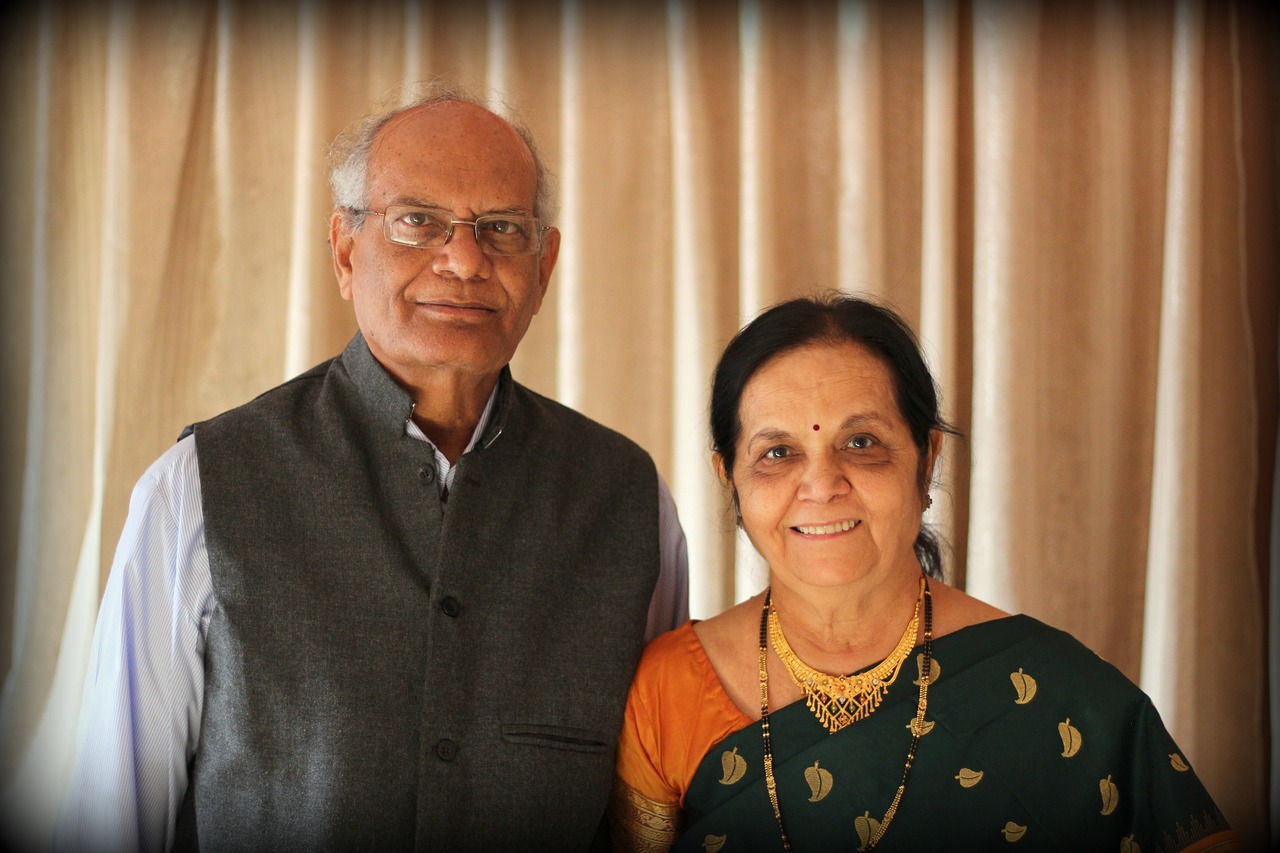
Engaging in pottery classes is not just about molding clay; it's about forging connections with others who share a similar passion. When individuals come together in a creative environment, they often find that they can relate to one another on a deeper level. The act of throwing clay becomes a shared journey, where laughter, mistakes, and triumphs are experienced collectively. This communal aspect fosters a sense of belonging that transcends the mere act of pottery-making.
Think of it as a dance. Each participant has their own rhythm, but when they move together, they create something beautiful. In pottery classes, this dance manifests in the form of collaboration. Students often help each other with techniques, share tips, and provide feedback, creating a supportive atmosphere. This not only enhances their skills but also builds friendships that can last long after the class ends.
Moreover, the act of creating together can lead to unforgettable memories. Imagine the joy of seeing a friend successfully center their clay for the first time or the collective gasp when a pot unexpectedly collapses. These moments, filled with genuine emotion, strengthen the bonds between participants. They become stories that are shared over coffee or during future classes, creating a rich tapestry of experiences that tie people together.
Additionally, pottery classes often attract a diverse group of individuals, each bringing unique perspectives and backgrounds. This diversity enriches the learning environment, as participants can learn not only from their instructor but also from each other. The exchange of ideas and techniques fosters a sense of community where everyone feels valued. In this way, pottery becomes a medium for not just artistic expression, but also for cultural exchange and understanding.
In essence, the relationships formed in pottery classes are built on shared experiences that enhance both personal growth and social connections. As participants navigate the challenges of clay throwing together, they create a supportive network that encourages emotional resilience and creativity. This sense of camaraderie is invaluable, as it transforms the solitary act of creating art into a vibrant community experience.
- What are the benefits of attending pottery classes? Pottery classes provide not only artistic skills but also opportunities for social interaction, emotional support, and personal growth.
- Can pottery help with stress relief? Yes, working with clay has therapeutic benefits that can significantly reduce stress and anxiety levels.
- How can I find a pottery class near me? You can search online for local art studios, community colleges, or adult education centers that offer pottery classes.
- Is pottery suitable for beginners? Absolutely! Most pottery classes cater to all skill levels, making it a perfect starting point for anyone interested in exploring their creative side.
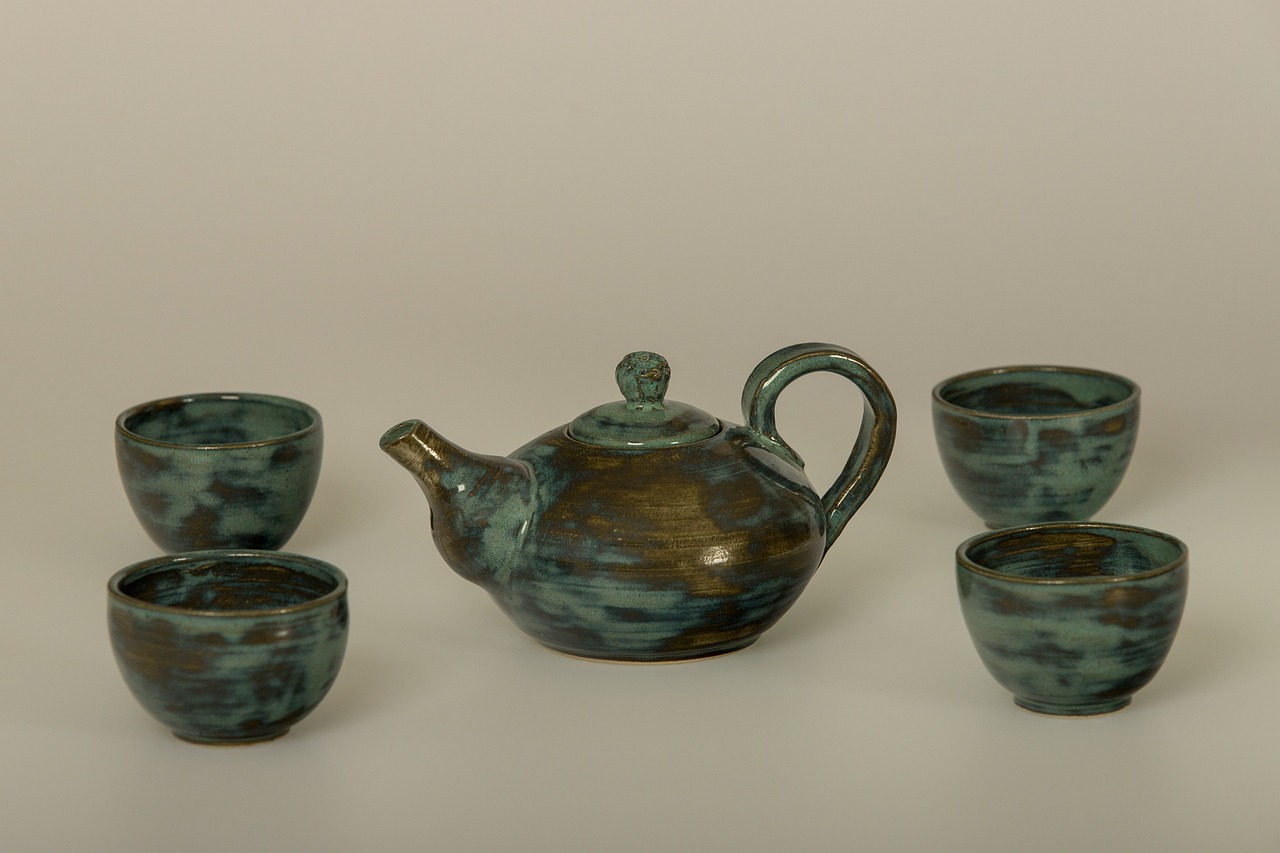
When it comes to mastering the art of throwing clay, the role of an instructor is not just important; it’s absolutely crucial. Think of an instructor as a lighthouse guiding you through the foggy waters of creativity and skill. Without their guidance, many aspiring potters might feel lost, overwhelmed, or unsure of their next steps. A good instructor doesn’t just teach techniques; they also provide emotional support and encouragement, helping students navigate the ups and downs that come with learning a new craft.
Effective teaching methods can transform a simple pottery class into a nurturing environment where students feel safe to express themselves and explore their creativity. Instructors who foster a supportive atmosphere often see their students thrive, not just in skill but also in confidence. When students feel that their instructor believes in their potential, they are more likely to take risks, experiment with new techniques, and ultimately, grow as artists.
Moreover, instructors can tailor their teaching styles to meet the unique needs of each student. This personalized approach can significantly enhance the learning experience. For instance, some students may benefit from hands-on demonstrations, while others might prefer verbal instructions or visual aids. A skilled instructor can recognize these preferences and adjust their methods accordingly, ensuring that every student has the opportunity to succeed.
Additionally, the impact of an instructor extends beyond the technical skills taught in class. They often play a pivotal role in fostering a sense of community among students. By encouraging collaboration and interaction, instructors help build relationships that can last a lifetime. This sense of belonging is vital, as it creates a support network where students can share their struggles and triumphs, making the learning process more enjoyable and fulfilling.
In summary, the impact of instructor guidance in pottery classes is multifaceted. From enhancing skill development to fostering emotional growth and community, a great instructor can make all the difference. Their ability to inspire and guide students not only shapes their pottery skills but also enriches their overall experience in the art of clay throwing.
- What should I look for in a pottery instructor? Look for someone who has a solid background in pottery, a passion for teaching, and the ability to create a supportive learning environment.
- How can I improve my pottery skills? Practice regularly, seek feedback from your instructor, and don’t be afraid to experiment with different techniques.
- Is pottery a good way to relieve stress? Yes! Working with clay can be incredibly therapeutic, offering a creative outlet that helps to reduce anxiety and promote relaxation.
Frequently Asked Questions
- What are the therapeutic benefits of working with clay?
Working with clay can significantly reduce stress and anxiety. The tactile nature of clay provides a calming effect, allowing individuals to focus their minds and escape from daily pressures. Engaging in this creative process can enhance mental well-being and promote relaxation.
- How does clay throwing encourage creativity and self-expression?
Clay throwing serves as a fantastic outlet for personal expression. It allows individuals to explore their creativity and communicate emotions that might be hard to articulate verbally. The process of shaping clay into unique forms can reflect one’s inner thoughts and feelings, making it a powerful medium for self-discovery.
- Can clay work help with mindfulness and being present?
Absolutely! The act of throwing clay requires concentration and focus, which naturally draws you into the present moment. This practice fosters mindfulness, helping individuals become more aware of their thoughts and feelings, ultimately leading to a greater sense of grounding and clarity.
- What cognitive benefits can arise from practicing mindfulness through clay work?
Practicing mindfulness while working with clay can enhance cognitive functions such as concentration and problem-solving. By focusing on the task at hand, individuals often find improved mental clarity, allowing them to tackle challenges more effectively both in and out of the studio.
- How can clay throwing aid in emotional regulation?
Creating art, including pottery, can be a powerful tool for emotional regulation. The process of shaping and molding clay allows individuals to process their feelings in a constructive way, serving as an emotional outlet that can lead to better understanding and management of their emotions.
- What role does failure play in the pottery-making process?
Mistakes are a natural part of creating pottery. Embracing failure can foster resilience and a growth mindset, teaching individuals that each misstep is an opportunity to learn and improve. This perspective can be incredibly empowering in both art and life.
- How do pottery classes promote social connections?
Participating in pottery classes encourages social interaction and community building. These shared experiences can lead to meaningful connections, providing emotional support and collaboration among participants, which enhances the overall learning experience.
- What impact does a skilled instructor have on the pottery learning experience?
A skilled instructor can greatly influence the learning journey in pottery classes. Effective teaching methods not only enhance skill development but also promote psychological growth, helping students to build confidence and enjoy the creative process.



















